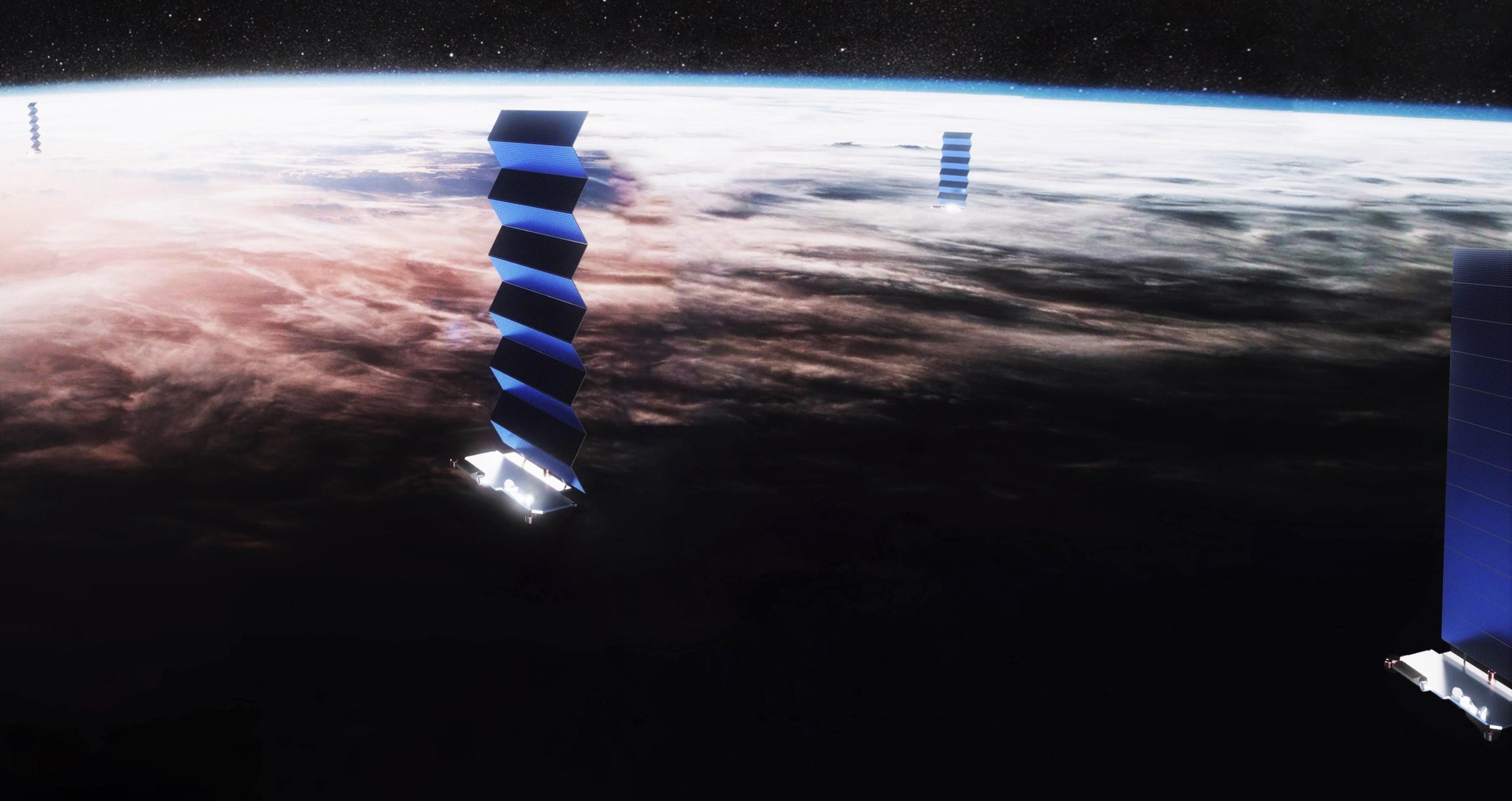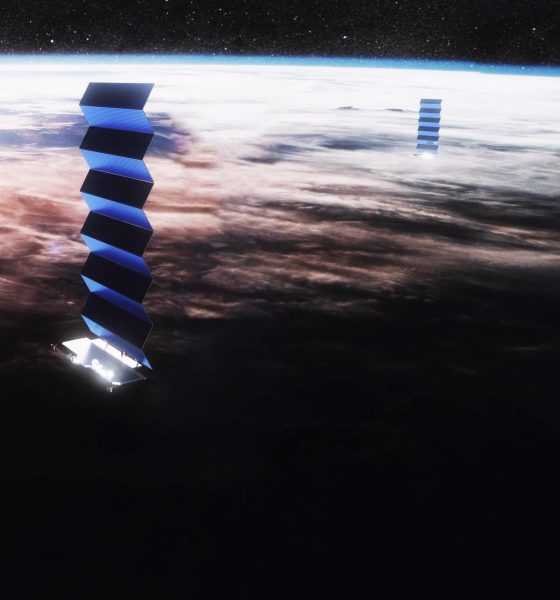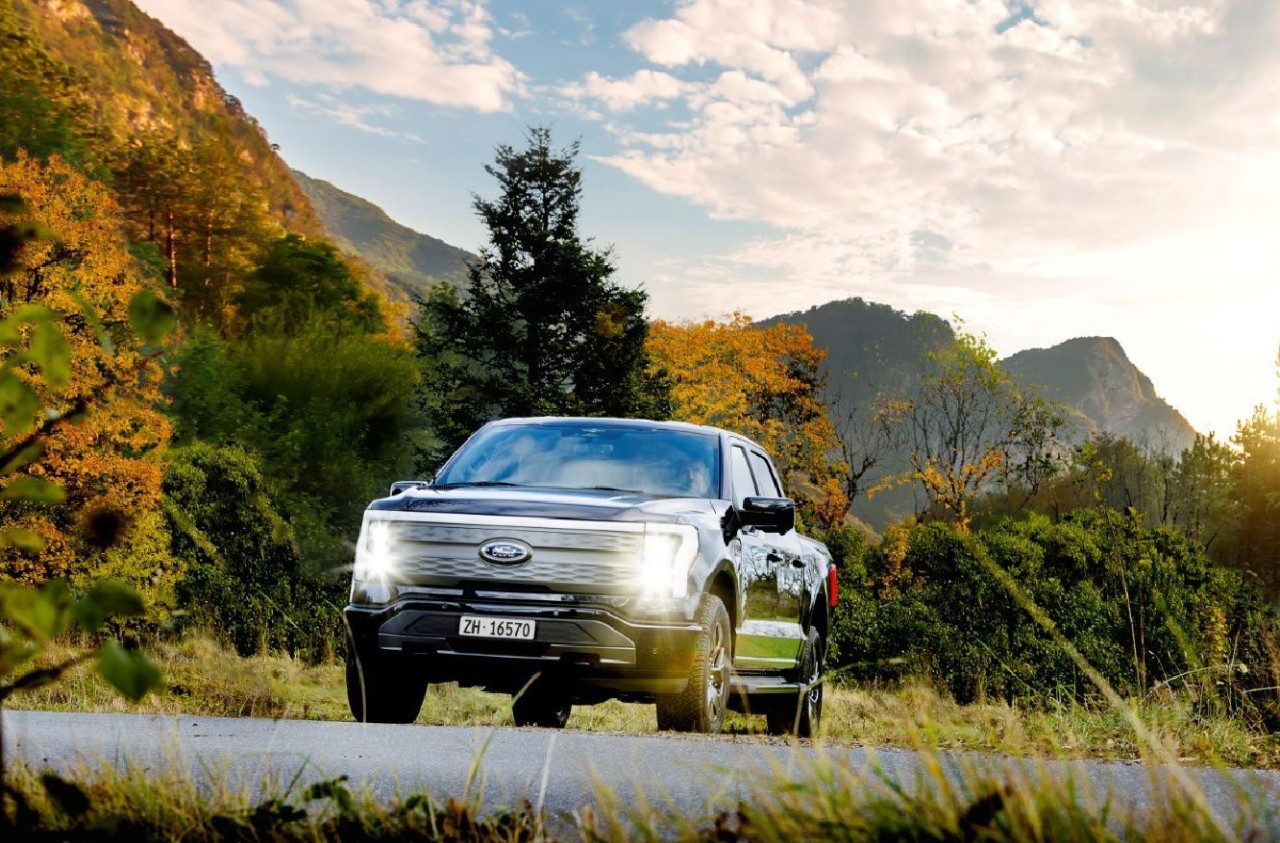

News
SpaceX worth $33B after raising more than $1B for Starlink and Starship
Since April 2018, SpaceX has successfully raised more than $1.24 billion through the sale of equity, likely sold to investors by extrapolating the company’s current record of success to include the potential of its next two products, Starlink and Starship.
Thanks to SpaceX’s successful streak of fundraising, the company is now valued at $33.3 billion according to sources that spoke with CNBC reporter Michael Sheetz. The same source indicated that demand for SpaceX equity remains strong as the company seeks to continue extremely expensive development and production programs. Most notably, SpaceX is simultaneously building two full-scale orbital Starship prototypes at separate facilities in Texas and Florida, readying an earlier Starhopper testbed for serious test flights, and is in the midst of ramping up its Starlink satellite production to levels unprecedented in the history of spaceflight.
Put simply, with SpaceX’s Starship and Starlink programs simultaneously entering into capital-intensive phases of development and production, the company has a huge amount of work on its plate. Most of that work involves testing prototypes with technologies that are frequently unprecedented, as well as refining those designs into something final and worthy of serious production. In the case of Starship, a great deal of integrated testing and design finalization lies ahead before SpaceX can even think about starting serial production of its ~50m (160 ft) tall steel Starships or ~60m (200 ft) Super Heavy boosters.
Although large-scale aerospace development programs already tend to be very expensive, SpaceX (led by CEO Elon Musk) has structured its Starship/Super Heavy development program to be extremely hardware-rich. This is another way to say that prototypes are constantly being built, designs are ever-changing, and hardware is constantly being severely damaged (or even destroyed) during fast-paced testing. SpaceX (and Musk) have often been famous for preferring development programs that move fast and break things, delivering knowledge and optimizing designs through lessons learned (often the hard way). SpaceX also values “scrappiness” in its programs, although that sadly ends up coming at the cost of employee pay (below industry standards) and benefits (scarce bonuses, no 401K-matching, extreme hours, minimal work-life balance).
Put it all together and the results of SpaceX-style development programs have frequently defied cemented industry expectations and beliefs. SpaceX has built – from scratch – entire launch vehicles (Falcon 9 V1.0) and spacecraft (Cargo Dragon) 5-10 times cheaper than NASA believed possible. SpaceX has successfully developed a commercially viable style of reusable rockets and took just ~30 months to go from its first attempted landing to a successful booster recovery and less than 15 months after that to reuse its first booster on a commercial, orbital-class launch. Competitors that vehemently denied that SpaceX would succeed are now 5-10 years behind with disinterested responses to the reusable titan that is Falcon 9/Falcon Heavy.
Still, while SpaceX’s record of commercial and technical spaceflight success is second-to-none since the Apollo Program and the early days of the Space Shuttle, even its extraordinarily cost-effective development style requires major funding in the face of ambitions as grand as Starship and Starlink.
Starlink races ahead
On May 23rd, SpaceX completed an extraordinarily ambitious Starlink launch debut, placing sixty “v0.9” spacecraft into low Earth orbit (LEO). Weighing no less than 16.5 tons (~36,000 lb), SpaceX’s first dedicated Starlink mission also became the heaviest payload the company has ever launched by at least ~30%. Aside from the spectacular statistics associated with the mission, SpaceX also debuted an exotic and largely unprecedented satellite form factor, stacking each flat, rectangular ~230 kg (510 lb) spacecraft like a deck of cards. With Starlink, SpaceX has also flown the first krypton-powered ion thrusters, replacing the traditional xenon to cut as much as $100,000 (or even more) from the cost of each satellite.
“We continue to track the progress of the Starlink satellites during early orbit operations. At this point, all 60 satellites have deployed their solar arrays successfully, generated positive power and communicated with our ground stations. Most are already using their onboard propulsion system to reach their operational altitude and have made initial contact using broadband phased array antennas. SpaceX continues to monitor the constellation for any satellites that may need to be safely deorbited. All the satellites have maneuvering capability and are programmed to avoid each other and other objects in orbit by a wide margin.” — SpaceX, May 31st

~20 days after launch, all 60 satellites are in contact with SpaceX ground controllers and all but 3-4 have managed to successfully begin raising their orbits from ~450 km to 550 km (280-340 mi). Roughly two dozen have already passed 500 km and most should reach their final orbits within 1-2 weeks.
By far the most significant news, however, was CEO Elon Musk’s confidence that SpaceX already has “sufficient capital to build an operational constellation”, likely referring to a constellation of 750-1500 spacecraft capable of either covering the entire US or offering “decent global coverage”. Of note, Musk made this comment days before SpaceX – via SEC filings – effectively announced that it has already raised more than $1B in 2019. A large portion – if not all – of that funding is thus likely bound for Starlink as the program’s shockingly small team of ~400 prepares to aggressively ramp up production.

According to both COO Gwynne Shotwell, Musk, and SpaceX, the company hopes to conduct an additional 1-5 launches of 60 Starlink satellites this year, potentially leaving SpaceX with a constellation of more than 400 satellites – with a total bandwidth of 7 terabits per second (tbps) – after just eight months of launches. Equally significant, SpaceX’s official Starlink.com website states that SpaceX wants to offer real internet service to an unspecified number of US and Canada consumers after just six launches. In other words, SpaceX could deliver the first (possibly alpha or beta) taste of consumer Starlink internet service by the end of 2019.
If SpaceX can deploy the constellation soon and Starlink reaches its cost, performance, and longevity targets, it’s safe to say that SpaceX’s private investors are going to be extraordinarily happy with their financial decision.
Check out Teslarati’s Marketplace! We offer Tesla accessories, including for the Tesla Cybertruck and Tesla Model 3.

News
Ford cancels all-electric F-150 Lightning, announces $19.5 billion in charges
“Rather than spending billions more on large EVs that now have no path to profitability, we are allocating that money into higher returning areas, more trucks and van hybrids, extended range electric vehicles, affordable EVs, and entirely new opportunities like energy storage.”

Ford is canceling the all-electric F-150 Lightning and also announced it would take a $19.5 billion charge as it aims to quickly restructure its strategy regarding electrification efforts, a massive blow for the Detroit-based company that was once one of the most gung-ho on transitioning to EVs.
The announcement comes as the writing on the wall seemed to get bolder and more identifiable. Ford was bleeding money in EVs and, although it had a lot of success with the all-electric Lightning, it is aiming to push its efforts elsewhere.
It will also restructure its entire strategy on EVs, and the Lightning is not the only vehicle getting the boot. The T3 pickup, a long-awaited vehicle that was developed in part of a skunkworks program, is also no longer in the company’s plans.
Instead of continuing on with its large EVs, it will now shift its focus to hybrids and “extended-range EVs,” which will have an onboard gasoline engine to increase traveling distance, according to the Wall Street Journal.
“Ford no longer plans to produce select larger electric vehicles where the business case has eroded due to lower-than-expected demand, high costs, and regulatory changes,” the company said in a statement.
🚨 Ford has announced it is discontinuing production of the F-150 Lightning, as it plans to report a charge of $19.5 billion in special items.
The Lightning will still be produced, but instead with a gas generator that will give it over 700 miles of range.
“Ford no longer… pic.twitter.com/ZttZ66SDHL
— TESLARATI (@Teslarati) December 15, 2025
While unfortunate, especially because the Lightning was a fantastic electric truck, Ford is ultimately a business, and a business needs to make money.
Ford has lost $13 billion on its EV business since 2023, and company executives are more than aware that they gave it plenty of time to flourish.
Andrew Frick, President of Ford, said:
“Rather than spending billions more on large EVs that now have no path to profitability, we are allocating that money into higher returning areas, more trucks and van hybrids, extended range electric vehicles, affordable EVs, and entirely new opportunities like energy storage.”
CEO Jim Farley also commented on the decision:
“Instead of plowing billions into the future knowing these large EVs will never make money, we are pivoting.”
Farley also said that the company now knows enough about the U.S. market “where we have a lot more certainty in this second inning.”
News
SpaceX shades airline for seeking contract with Amazon’s Starlink rival

SpaceX employees, including its CEO Elon Musk, shaded American Airlines on social media this past weekend due to the company’s reported talks with Amazon’s Starlink rival, Leo.
Starlink has been adopted by several airlines, including United Airlines, Qatar Airways, Hawaiian Airlines, WestJet, Air France, airBaltic, and others. It has gained notoriety as an extremely solid, dependable, and reliable option for airline travel, as traditional options frequently cause users to lose connection to the internet.
Many airlines have made the switch, while others continue to mull the options available to them. American Airlines is one of them.
A report from Bloomberg indicates the airline is thinking of going with a Starlink rival owned by Amazon, called Leo. It was previously referred to as Project Kuiper.
American CEO Robert Isom said (via Bloomberg):
“While there’s Starlink, there are other low-Earth-orbit satellite opportunities that we can look at. We’re making sure that American is going to have what our customers need.”
Isom also said American has been in touch with Amazon about installing Leo on its aircraft, but he would not reveal the status of any discussions with the company.
The report caught the attention of Michael Nicolls, the Vice President of Starlink Engineering at SpaceX, who said:
“Only fly on airlines with good connectivity… and only one source of good connectivity at the moment…”
CEO Elon Musk replied to Nicolls by stating that American Airlines risks losing “a lot of customers if their connectivity solution fails.”
American Airlines will lose a lot of customers if their connectivity solution fails
— Elon Musk (@elonmusk) December 14, 2025
There are over 8,000 Starlink satellites in orbit currently, offering internet coverage in over 150 countries and territories globally. SpaceX expands its array of satellites nearly every week with launches from California and Florida, aiming to offer internet access to everyone across the globe.
Currently, the company is focusing on expanding into new markets, such as Africa and Asia.
News
Tesla Model Y Standard stuns in new range test, besting its Premium siblings
Tesla’s newer vehicles have continued to meet or exceed their EPA estimates. This is a drastic change, as every 2018-2023 model year Tesla that Edmunds assessed did not meet its range estimates.

The Tesla Model Y Standard stunned in a new range test performed by automotive media outlet Edmunds, besting all of its Premium siblings that are more expensive and more luxurious in terms of features.
Testing showed the Model Y Standard exceeded its EPA-estimated range rating of 321 miles, as Edmunds said it is the “longest-range Model Y that we’ve ever put on our loop.” In the past, some vehicles have come up short in comparison with EPA ranges; for example, the Model Y’s previous generation vehicle had an EPA-estimated range of 330 miles, but only drove 310.
Additionally, the Launch Series Model Y, the first configuration to be built in the “Juniper” program, landed perfectly on the EPA’s range estimates at 327 miles.
It was also more efficient than Premium offerings, as it utilized just 22.8 kWh to go 100 miles. The Launch Series used 26.8 kWh to travel the same distance.
It is tested using Edmunds’ traditional EV range testing procedure, which follows a strict route of 60 percent city and 40 percent highway driving. The average speed throughout the trip is 40 MPH, and the car is required to stay within 5 MPH of all posted speed limits.
Each car is also put in its most efficient drive setting, and the climate is kept on auto at 72 degrees.
“All of this most accurately represents the real-world driving that owners do day to day,” the publication says.
With this procedure, testing is as consistent as it can get. Of course, there are other factors, like temperature and traffic density. However, one thing is important to note: Tesla’s newer vehicles have continued to meet or exceed their EPA estimates. This is a drastic change, as every 2018-2023 model year Tesla that Edmunds assessed did not meet its range estimates.
Tesla Model Y Standard vs. Tesla Model Y Premium
Tesla’s two Model Y levels both offer a great option for whichever fits your budget. However, when you sit in both cars, you will notice distinct differences between them.
The Premium definitely has a more luxurious feel, while the Standard is stripped of many of the more premium features, like Vegan Leather Interior, acoustic-lined glass, and a better sound system.
You can read our full review of the Model Y Standard below:
Tesla Model Y Standard Full Review: Is it worth the lower price?








